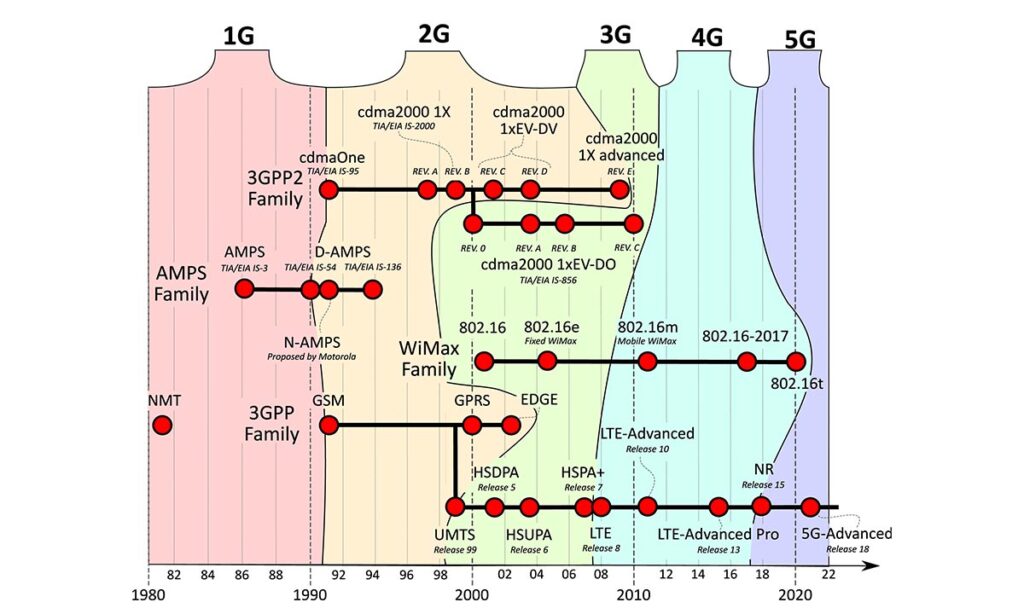Mobile communication technologies are always progressing forward, with faster, more efficient, and more reliable technologies emerging all the time. While 5G begins its global rollout, tech industry members have begun discussing its successor: 6G. What exactly are its differences from its predecessor and why should we get excited for its arrival? Let’s find out what is the difference between 5g and 6g mobile network technology.
Understanding 5G: The Current Revolution
- Speed and Data Rates:
5G offers unprecedented download speeds of 20 Gbps, making possible seamless 4K video streaming as well as ultra-responsive gaming experiences.
- Latency:
5G has become an excellent platform for applications requiring immediate responses, such as autonomous driving and remote medical procedures, such as real-time medical exams. With latency rates of around 1 millisecond, 5G provides real-time capabilities necessary for applications requiring real-time responses such as autonomous driving and remote medical procedures. - Spectrum Usage:
5G utilizes frequencies between sub-6 GHz and millimetre waves, offering higher data rates but possibly limited coverage. - Connection Density: 5G: Created specifically with IoT devices in mind, 5G’s robust connectivity supports an impressive array of connected devices per square kilometre, ushering in an exciting era of interconnection.
- Energy Efficiency:
5G’s commitment to sustainability makes it more energy-efficient than 4G, helping increase battery longevity on mobile devices. - AI Integration: 5G’s AI support can support certain applications; however, what awaits with 6G is much greater.

Glimping into the Future: What 6G Offers
- Speed and Data Rates: 6G (Expected): It could revolutionise speed with projections reaching 100 Gbps or even 1 Tbps! Imagine downloading large files instantly or experiencing virtual reality environments instantly!
- Latency: 6G is expected to help further reduce latency by providing response times of just microseconds – ideal for real-time applications in the future.
- Spectrum Utilization (Expected): 6G is expected to delve deep into uncharted waters, harnessing even higher frequency bands like terahertz frequencies for wide bandwidths.
- Connection Density (Expected): Imagine living in a world in which every sensor, wearable device and electronic gadget was interconnected – this is what 6G hopes to accomplish with its dense connectivity capabilities.
- Energy Efficiency (Expected): At 6G, sustainability will take center stage, with potential energy-saving technologies emerging as its hallmark feature.
- AI Integration for 6G Networks (Expected): AI could become increasingly integrated into 6G’s fabric, creating smarter and more autonomous networks.
- Immersive Experiences:
6G is poised to transform AR and VR experiences by providing lifelike holograms that allow for immersive holographic experiences. - Global Connectivity: 6G is expected to bridge digital divides, offering internet access even in remote corners of the globe via innovative platforms such as satellite constellations.
- Security and Privacy:
6G is expected to bolster cybersecurity measures such as quantum-resistant encryption to safeguard user data in an age of cyber attacks.
South Korea Is Racing to 6G
South Korea, known for its technological brilliance, has ambitiously embarked upon the 6G revolution. Plans to introduce 6G networks and services before 2028 put South Korea ahead of global giants such as the US, UK and China – not forgetting they were among the first nations to roll out 5G networks and introduce 5G-enabled smartphones!
South Korea’s Ministry of Information and Communication Technology recently unveiled plans to launch commercial 6G network service by 2028 – two years earlier than initially projected. They plan on tech giants Samsung and LG joining this initiative.
South Korea has set out a clear strategy: they aim to develop their 6G network service using cutting-edge technologies and software, as well as strengthen their supply chain by incentivizing local companies to innovate essential materials and components necessary for its creation. To accomplish these objectives, their government provides incentives for local firms that develop materials or components needed for this network to innovate or develop innovative ideas for development of essential 6G materials and components.
South Korea faces stiff competition on its path to 6G network deployment; other nations such as the US, Taiwan and China are all seeking to unveil the world’s first commercially available 6G network first. Although Chinese and Taiwan may present challenges along this journey, South Korea remains optimistic given current global political developments that might impede Chinese progress on 6G development.
With an estimated project value of 625.3 billion won (about $482.1 million), South Korea stands to gain tremendously from this endeavor, as one of Asia’s four-largest economies and major players in 5G patent landscape. They aim to secure further their global standing by purchasing top-tier 6G network equipment and launching it ahead of others; their goal? Capturing at least 30% of 6G patents as global technology leader.
6G technology is widely viewed as being essential to our next communication era, according to experts. They predict it could significantly blur the boundaries between virtual and physical worlds, making holographic communication possible on a daily basis.
Conclusion
Although 5G has already had a tremendous effect on our digital landscape, 6G holds even greater promise for revolutionising how we work, play and communicate. At this juncture in time, one thing is clear: mobile communication’s future looks brighter than ever.

